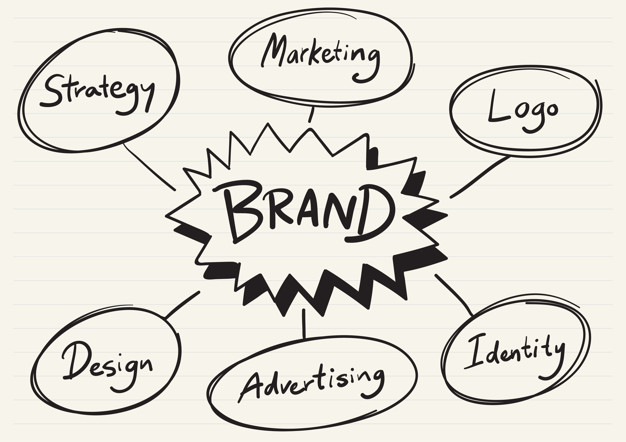Welcome to the startup world, where incredible highs, a few “eek” moments, and a plethora of life-changing experiences are all but inevitable. But, amid all the growth and development that any startup goes through, there is one constant that can help keep your company focused and maintain its integrity: your brand.
But how do you market a startup? Improve your startup’s brand strategy with these suggestions for getting your company off to a good start.
1. Choosing a business name

The name of your company will, of course, be an essential part of your brand identification. When people hear your company’s name, what do they think of it? Is it your product or services, the industry you work in, or your morals? Consider what story you want to convey to guarantee you start with a name beneficial to your branding endeavor. Then, consider your company’s name as the story’s title.
2. Combine your branding and marketing strategies

There’s no avoiding the fact that marketing strategy and brand image are inextricably linked. As a result, doing both things simultaneously when starting a firm in the market is a great idea. In fact, as a startup owner, you already have a huge advantage because your company employs fewer people. More crucially, as compared to large corporations, you are more agile.
So, combine the two tactics to create a more meaningful product or service. You can also consider the role of various marketing channels, such as social media platforms, websites, events, email, speeches, or content marketing, in your goals. These platforms will assist you in communicating your brand and obtaining the information you need from your target audiences.
3. Take into account your intended audience

Another small business branding tip is to keep your target audiences in mind at all times. Your company’s brand image will always play a role both internally and outside. On the internal side, it helps you align your company’s aims and objectives and gives your employees a sense of belonging and purpose. Your brand determines how your target audience on the outside sees your business.
You must have a concept of the type of individuals you wish to target or who are likely to be interested in your products or services when launching a business. What about others who might want to work for your company or who are more interested in your business model and want to contribute something unique to it?
More crucially, some other people (bloggers, journalists, and influencers) are willing to write about your company or cooperate on material with you. As a result, it’s critical to retain an open mind and a listening ear to ensure you have a current image of your brand’s various audience groups.
4. Make a budget for branding

The following step is both difficult and straightforward. Calculating your budget entails determining how much money you can afford to spend on your company’s marketing efforts. To put it another way, how much money will it need to succeed? Don’t forget about the time factor as well. How much time do you have available to design and manage your marketing campaign?
This stage frequently perplexes people since they are unsure of the quantity of money required to attain desired goals. In essence, there is no such thing as a magic number. This monetary number boils down to putting aside only as much as you can spare for most startups.
5. Use social media to keep track of your audience

You must market your brand where your potential clients are to succeed. If you’re in the fashion industry, for example, Pinterest is an excellent method to reach out to your female audience. On the other hand, Pinterest is not the best social media tool to use if you want to reach young male gamers because it does not entertain that consumer demographic.
Investigate the various social media platforms to see where your target audience congregates so that you can interact with them. Spend your time and money on the ones that will help you build your brand.
6. Color Palette

Color has a lot of power, and if you choose your brand color palette based only on personal opinion (“I like red, so let’s have a red logo!”), you’re missing out on a lot already.
Color has strong connotations with people, and if you understand them, you can utilize it strategically to elicit specific thoughts, feelings, and reactions from your audience.
Do you want to stand out from the crowd? If all your competitors are swimming in a sea of blue, using a color like silver or maroon can help distinguish your company as unique and noteworthy—and catch your audience’s attention in the process.
If you are unsure how to do this, visit endlessbranding.com to get exceptional solutions for all your branding needs.
7. Branding typography

Typography is an essential aspect of your visual identity when it comes to branding. Serif textual styles, for example, have appeared to become more common over time, and they are usually better suited for printing.
On the other hand, simple text styles present a steadily positive and informal approach and provide excellent readability on computerized devices.
8. Research your competition

Even the newest or most start-up enterprises are caught off guard today. You’re joining the game after many other organizations have just started, which means you’ll have to work hard to get a seat on the board.
Examining your competitors will help you determine not only where there is a gap in the market but also what you need to do to brand yourself properly.
Conclusion
Building a brand is an arduous effort, but with the appropriate vision, strategy, exceptional products or services, and a little ingenuity, you can get a long way in the race. In reality, the suggestions above will assist you in carrying out tasks in a more meaningful manner. More significantly, if you want to achieve success, you must learn to be aware of what is happening in the world. You may put it to the test and develop your brand your way.
 Imagup General Magazine 2024
Imagup General Magazine 2024



